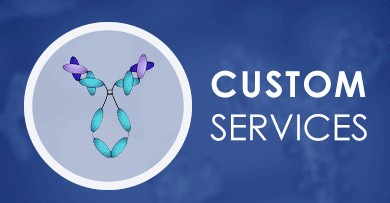+ Filter
 Loading...
Loading...

α-enolase I
 Loading...
Loading...Anti-α-enolase I Products
- Recombinant Anti-α-enolase I Antibody (MOB-1062)
-
- Derivation: Mouse
- Type: IgG
- Application: WB, Neut, FuncS
- Recombinant Human Anti-α-enolase I Antibody (MHH-1062)
-
- Derivation: Human
- Type: IgG
- Application: ELISA, RIA, FuncS
- Recombinant Anti-α-enolase I Antibody scFv Fragment (MOB-1062-S(P))
-
- Derivation: Mouse
- Type: scFv
- Application: Neut, IF, FuncS
- Recombinant Human Anti-α-enolase I Antibody scFv Fragment (MHH-1062-S(P))
-
- Derivation: Human
- Type: scFv
- Application: FC, IP, FuncS
- Recombinant Human Anti-α-enolase I Antibody Fab Fragment (MHH-1062-F(E))
-
- Derivation: Human
- Type: Fab
- Application: IP, FuncS
- Recombinant Anti-α-enolase I Antibody Fab Fragment (MOB-1062-F(E))
-
- Derivation: Mouse
- Type: Fab
- Application: IF, FuncS
View More Products
Can't find the products you're looking for? Try to filter in the left sidebar.Filter By Tag
More Infomation
Our customer service representatives are available 24 hours a day, from Monday to Sunday. Contact Us
For Research Use Only. Not For Clinical Use.
Background
Enolase, also known as phosphopyruvate hydratase, is a metalloenzyme responsible for the catalysis of the conversion of 2-phosphoglycerate (2-PG) to phosphoenolpyruvate (PEP), the ninth and penultimate step of glycolysis. Enolase belongs to the class Lyase. Enolase can also catalyze the reverse reaction, depending on environmental concentrations of substrates. The optimum pH for this enzyme is 6.5. Enolase is present in all tissues and organisms capable of glycolysis or fermentation. The enzyme was discovered by Lohmann and Meyerhof in 1934, and has since been isolated from a variety of sources including human muscle and erythrocytes. In humans, deficiency of ENO1 is linked to hereditary haemolytic anemia while ENO3 deficiency is linked to glycogen storage disease XIII.

